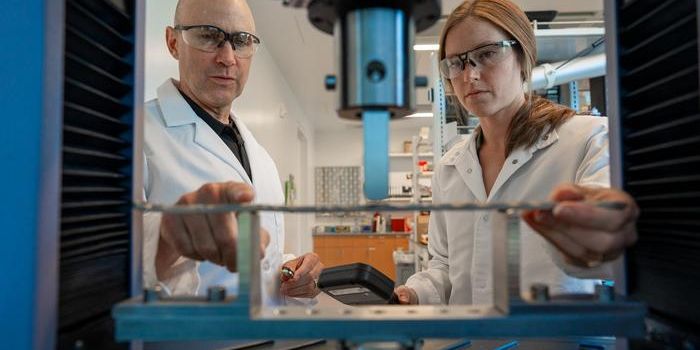Pitcher Plants Inspire Kidney Stone Diagnostic
Urine contains an abundance of dissolved salts and minerals such as calcium and uric acid. These can form crystals, which can grow in size, creating a very painful problem. Stanford and Penn State researchers have created a new diagnostic test inspired by pitcher plants — carnivorous plants with jug-shaped leaves to trap insects.
"There are many aspects we can learn from nature and our environment, and our research is an example how biomedical engineers can make good use of it," said Pak Kin Wong, the principal investigator of the study, published recently in Science Advances.
The team developed a biomimetic kidney stone detection system they called slippery liquid-infused porous surface (SLIPS)-LAB. The device uses surface tension forces to draw urine droplets easily through super-smooth channels, allowing a carefully-controlled diagnostic chemical reaction to occur. This innovation bears many similarities to the pitcher plants’ slick, liquid-infused, micro-textured rims that cause unsuspecting insects to slide right into their vessels containing harsh digestive enzymes.
Understanding the nature of kidney stone crystals is critical a critical first step in preventing them from coming back. Chemical analysis reveals that most of these stones are made of either calcium oxalate or calcium phosphate. Not drinking enough water, too much salt in the diet and obesity are risk factors for their development. Urinary stone disease affects nearly 20 percent of men and 10 percent of women during their lifetimes and takes a $5 billion toll on healthcare systems in the United States.
Today, kidney stone sufferers have to go through an arduous process of collecting their urine over a 24-hour period in a large container which is then sent off for laboratory analysis. Patients typically get their reports over a week later.
In contrast, the new test can be read with a scanner, or even a cell phone, with the images analyzed and interpreted and sent to a physician’s office in about 30 minutes.
According to Wong, this is a major breakthrough in the management of urinary stone disease and empowers patients with the ability to test their own samples. "The low cost, rapidity and simplicity of SLIPS-LAB would reduce the barrier for the clinician and patient to undergo stone risk metabolite analysis.”
Sources: EurekAlert, Science Advances.









